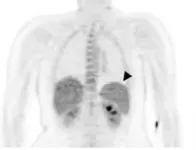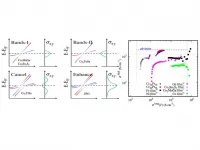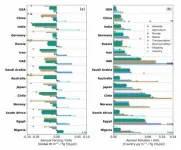(Press-News.org) A nationwide study in Sweden estimates the elevated risk of advanced or fatal prostate cancer among relatives of men with the disease, providing new data that could help refine guidelines for the age at which screening should begin. Mahdi Fallah and Elham Kharazmi of the German Cancer Research Center (DKFZ) in Heidelberg, Germany, and colleagues present these new findings in the open-access journal PLOS Medicine.
Clinical guidelines for the age to start prostate cancer screening aim to ensure that the benefits of identifying the disease early outweigh the risks of diagnosing and treating cancer that will not harm the patient. Current guidelines note that men with a family history of prostate cancer have a greater risk and should begin screening early. However, due to lack of sufficient data, the age at which early screening should begin has been unclear.
To address this problem, Fallah and colleagues conducted an analysis of all male residents of Sweden born after 1931, as well as their fathers. Between 1958 to 2015, 88,999 out of a total of 6,343,727 men were diagnosed with advanced stage (III or IV) prostate cancer, or died from the disease.
The researchers used these data to calculate the age at which men who had a father, brother, or son diagnosed with prostate cancer reached the "screening risk threshold;" i.e., the same level of prostate cancer risk as at the age of 50 years across the entire population. (Many guidelines recommend that screening begin at 50 years.)
The researchers found that men with a family history of prostate cancer reached the screening risk threshold up to 12 years earlier. However, different men reached this threshold at different ages, depending on how many of their first-degree relatives had prostate cancer and the age at which the relatives were diagnosed.
By comparing their calculations with various guidelines, the researchers determined that men with a family history of prostate cancer reach a high enough risk to start screening anywhere from 2 to 11 years earlier than currently recommended.
These findings could lead to greater personalization of screening guidelines. Further research could help validate these results in populations of different ethnicity, while also accounting for genetics and lifestyle.
"The one-size-fits-all policy in medicine belongs to the past; more and more risk-adapted approaches are needed instead to optimize use of restricted resources in health care", said Dr. Kharazmi, co-leader of this study. "The aim of our group is to fill this gap (a personalized approach in screening) for various cancers, such as prostate, breast, and colorectal cancer, using long-standing high-quality large-scale register-based data, to provide robust evidence to support screening guidelines", Mahdi Fallah, professor of Medicine (Epidemiology) in the University of Bergen, Norway, and leader of Risk-Adapted Cancer Prevention Group, DKFZ, Germany.
INFORMATION:
Research Article
Peer reviewed; Observational; Humans
In your coverage please use this URL to provide access to the freely available paper:
http://journals.plos.org/plosmedicine/article?id=10.1371/journal.pmed.1003616
Funding: XX received scholarship from the China Scholarship Council (http://www.chinesescholarshipcouncil.com/). KS (grant number 2018-02400) and JS (grant number 2020-01175) were supported by grants from the Swedish Research Council (http://www.vr.se/english.html). The funders had no role in study design, data collection and analysis, decision to publish, or preparation of the manuscript.
Competing Interests: The authors have declared that no competing interests exist.
Citation: Xu X, Kharazmi E, Tian Y, Mukama T, Sundquist K, Sundquist J, et al. (2021) Risk of prostate cancer in relatives of prostate cancer patients in Sweden: A nationwide cohort study. PLoS Med 18(6): e1003616. https://doi.org/10.1371/journal.pmed.1003616
The malaria parasite Plasmodium vivax may accumulate in the spleen soon after infection to a greater extent than its better-known relative P. falciparum, according to new research published by John Woodford of the University of Queensland, Brisbane, Australia and colleagues in the open access journal PLOS Medicine.
Managing and treating P. vivax and P. falciparum infections calls for investigation of their different pathways of infection, and our limited understanding of disease pathology has generally relied on indirect and imprecise approaches. Woodford and colleagues studied 7 healthy participants who were infected under controlled conditions with either P. vivax or P. falciparum. They underwent a Positron Emission Tomography (PET) ...
Many organisms in need of conservation are still unknown or lumped in with similar species, which potentially interferes with conservation efforts. In a new study published June 1 in the Open Access journal PLOS Biology, Jane Melville of Museums Victoria, and her colleagues present a new "return-on-investment" approach to best direct efforts to identify new species before they are lost.
Humans have had a profoundly destructive impact on global biodiversity. However, this loss of biodiversity may be even greater than scientists have realized, due to the unknown number of undocumented species. Before a species and its habitat can be preserved, though, it must first ...
Stigma and high care needs can present barriers to the provision of high-quality primary care for people with opioid use disorder (OUD) and those prescribed opioids for chronic pain. A study published in PLOS Medicine by Tara Gomes at the Li Ka Shing Knowledge Institute of St. Michael's Hospital, Toronto, Canada and colleagues suggests that people treated for an opioid use disorder were less likely to find a new primary care provider (PCP) within one year of termination of enrolment with the previous physician.
People with substance use disorders often have complex medical needs, requiring ...
A new analysis of adults aged 80 years and older shows that a healthier lifestyle is associated with a lower risk of cognitive impairment, and that this link does not depend on whether a person carries a particular form of the gene APOE. Xurui Jin of Duke Kunshan University in Jiangsu, China, and colleagues present these findings in the open-access journal PLOS Medicine.
The APOE gene comes in several different forms, and people with a form known as APOE ε4 have an increased risk of cognitive impairment and Alzheimer's disease. Previous research has also linked cognitive function to lifestyle factors, such as smoking, ...
Malaria, a disease caused mainly by the parasites Plasmodium falciparum and Plasmodium vivax, (P. vivax) is associated with over 400,000 deaths each year. Previously, the spleen was assumed to mostly play a role in parasite destruction, as it eliminates malaria parasites after antimalarial treatment. A study published in the open access journal PLOS Medicine by Steven Kho and Nicholas Anstey at Menzies School of Health Research, Australia, and international colleagues, suggests that in chronic P. vivax infections, malaria parasites survive and replicate via a previously undetected lifecycle within the spleen.
A large biomass of intact asexual-stage ...
A clinical trial examining the efficacy of two devices to monitor and detect atrial fibrillation (AF), or an irregular heartbeat, in ischemic stroke patients--one an implantable device that monitors over 12 months, the other an external device that monitors over a 30-day period--found the implantable device is more than three times more effective in detecting AF, and both are a significant improvement over the current standard of care in Alberta, Canada.
The Post-Embolic Rhythm Detection With Implantable Versus External Monitoring (PER DIEM) study, led jointly by University of Alberta ...
The electronic structure of metallic materials determines the behavior of electron transport. Magnetic Weyl semimetals have a unique topological electronic structure - the electron's motion is dynamically linked to its spin. These Weyl semimetals have come to be the most exciting quantum materials that allow for dissipationless transport, low power operation, and exotic topological fields that can accelerate the motion of the electrons in new directions. The compounds Co3Sn2S2 and Co2MnGa [1-4], recently discovered by the Felser group, have shown some of the most prominent effects due to a set of two topological bands.
Researchers at the Max Planck Institute ...
Aerosol reductions that would take place as countries meet climate goals could contribute to global cooling and prevent more than one million annual premature deaths over a decade, according to a new study from the University of California San Diego.
The landmark Paris Agreement of 2016 does not address emissions of aerosols--fine particulates like soot that cause pollution. Nonetheless, findings from the recent study authored by researchers at UC San Diego's Scripps Institution of Oceanography and the School of Global Policy and Strategy suggests that aerosol accounting should be explicitly incorporated into international climate policy.
It is crucial because as countries implement their greenhouse gas reduction targets under the Paris climate agreement, ...
BOSTON - For patients who have experienced certain common types of stroke, a small chip inserted under the skin may help physicians predict their likelihood of experiencing a second stroke, and therefore their likelihood of benefiting from preventive therapy. The findings come from a recent clinical trial published in the END ...
From the biggest bridges to the smallest medical implants, sensors are everywhere, and for good reason: The ability to sense and monitor changes before they become problems can be both cost-saving and life-saving.
To better address these potential threats, the Intelligent Structural Monitoring and Response Testing (iSMaRT) Lab at the University of Pittsburgh Swanson School of Engineering has designed a new class of materials that are both sensing mediums and nanogenerators, and are poised to revolutionize the multifunctional material technology big and small.
The research, recently published in Nano Energy, describes a new metamaterial system that ...





